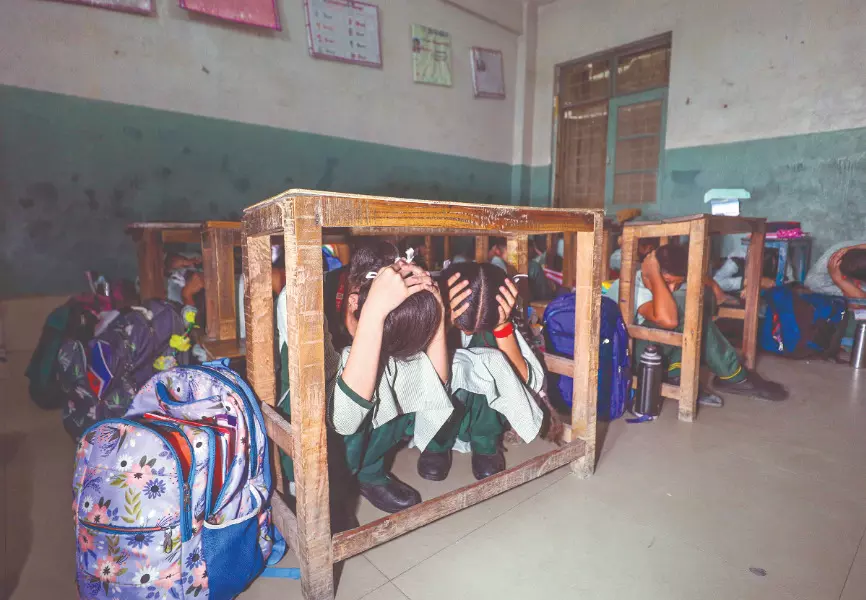Bengal gears up for nationwide drill; focus on ‘strategic zones, emergency readiness’

Kolkata/ Darjeeling: The state government will focus on assessing the preparedness of critical systems such as ambulance services, firefighting capabilities, evacuation protocols, hospital bed availability, and civil defence responses, as part of a nationwide civil defence mock drill scheduled for Wednesday across all districts.
The nationwide drill, announced by the Central government, comes amid heightened tensions between India and Pakistan following the April 22 terror attack in Pahalgam.
The general public will not be directly involved in the exercise, it was learnt.
According to Nabanna sources, the Centre has marked 17 districts in Bengal as highly sensitive. However, the exact locations for the drills will be decided by the state administration, since they will be responsible for conducting real-time operations during an actual emergency.
Union Home Secretary Govind Mohan held a meeting with Bengal officials to review plans for the upcoming mock drill and possible wartime emergency scenarios.
Bengal’s chief secretary Manoj Pant, Home secretary Nandini Chakraborty, Disaster Management secretary Rajesh Sinha, DG Civil Defence Jagmohan and the DG of the National Disaster Response Force (NDRF) attended the meeting.
Mohan made it clear that the state must be prepared for swift, coordinated disaster management, evacuation and rescue operations in the event of a conflict situation. Any existing shortcomings in the emergency response system must be promptly rectified.
The Centre’s list of places for conduct of such mock drills include Cooch Behar, Darjeeling, Jalpaiguri, Malda, Siliguri, Greater Kolkata, Durgapur, Haldia, Hasimara, Kharagpur, Burnpur- Asansol, Farakka- Khejuriaghat, Chittaranjan, Balurghat, Alipurduar, Raiganj, Islampur, Dinhata, Mekhliganj, Mathabhanga, Kalimpong, Birbhum, West Midnapore, East Midnapore, Howrah, Hooghly and Murshidabad.
“Several sirens are already installed across districts.
In Kolkata alone, there are 92 sirens — many of which had become defunct over time have now been ordered for immediate restoration. On average, each district has around 20 to 25 sirens, with one stationed at every district headquarters. All of them will be repaired,“ said a senior Nabanna official.
He added that 62 satellite phones are currently available statewide.
The primary line of communication between the state and civil defence during emergencies will be via the Air Force. Updates and warnings will be relayed to Civil Defence through the Air Force, which will then disseminate them to other relevant authorities and the public.
According to sources, the state government has been given seven days to complete all logistical preparations, including repairing infrastructure, ensuring the availability of essential equipment, and rehearsing emergency operations.
The Centre has directed the state to immediately set up control rooms in every district, operational 24x7.
The total number of trained civil defence volunteers in Kolkata is 8,000, and the number is 51,000 statewide. The total number of ‘Aapda Mitra’ in the state is 7,200.
Meanwhile, it was learnt that special focus is also being placed on the Siliguri Corridor, also known as the “Chicken’s Neck” in defence parlance.
This narrow strip of land connects the northeastern states to the Indian mainland.
The Chicken’s Neck, a 22–35 km wide land strip, is bordered by Bangladesh to the southwest, Nepal to the northwest, Bhutan to the north, and China to the north and northeast. It is a strategic hotspot, being the only land route connecting mainland India with the northeast states. In the event of a conflict, an adversary could attempt to sever this crucial link.



